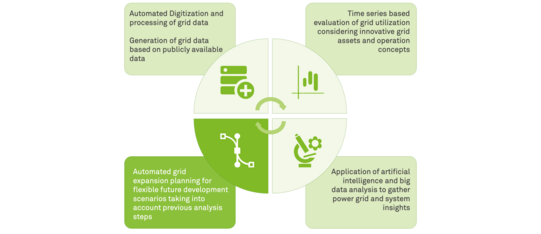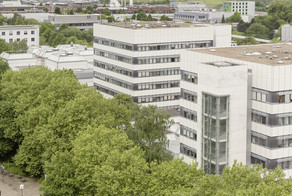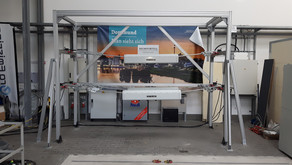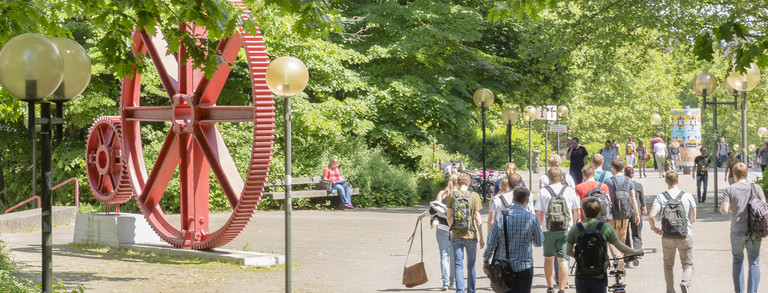Automated expansion planning

The political will to protect the climate and the corresponding targets of the EEG are leading to an increase in installed capacity for electricity generation from renewable energy resources in Germany. In addition, many applications in the mobility and heat sector will be electrified. The distribution grids in particular account for a large part of this development and, due to the new supply task, there is a significant need for grid reinforcement in many regions. Since grid expansion is associated with high investment costs, methods must be developed to determine the necessary and cost-efficient grid expansion measures. At ie³, various simulation environments can be used to simulate the need for grid expansion taking into account current planning principles.
The simulation environment ADiXPlan enables the determination of grid reinforcement measures on the basis of two generated relevant grid study cases. The methodology uses forecasts for the increase of installed capacities of distributed energy resource units in addition to the grid data as an input. A discretisation in individual units is then carried out to determine the future supply task in the grid area. In the next step, the behaviour of flexible units can be taken into account in the creation of the load and feed-in scenarios. For example, peak shaving of wind turbines can be considered using an upstream time series simulation. Power flow calculations can be carried out for both study cases, in which the use of innovative equipment, such as OLTCs, is optimized. In case of constraint violations, efficient grid expansion measures are determined by means of a heuristic. The heuristic enables the rapid calculation of different future scenarios in the investigated grids and provides the grid expansion measures as a result, which is also expressed in monetary terms. Additional information about ADiXPlan can be found in the dissertation "Integration und Bewertung der Spitzenkappung als Planungsgrundsatz zur wirtschaftlichen Netzentwicklung in Mittelspannungsnetzen" by Dr.-Ing. Christian Wagner.
An extension of the expansion simulation tool allows the determination of grid expansion measures based on annual time series and integrates the general flexibility consideration into the planning process. Existing time series, which may originate from a market simulation or SIMONA, are expanded to include information on whether the associated units are fundamentally flexible and can be used to counter congestions. An input parameter is used to determine the extent to which the flexibility of these units can be used for that purpose. On the basis of sensitivity calculations, the schedules of the flexible units are adjusted in such a way that any breaches of grid constraints are eliminated or reduced. Thus, the changed time series of each unit serve as input data for the selection of the grid reinforcement measures. These measures are determined for meshed grid topologies by means of optimisation. The expansion simulation thus generates grid expansion variants which require flexibility management that is beneficial to the grid. These grid expansion variants for example can be used for the economic analysis and evaluation of regional flexibility markets and the associated investment cost savings in grid expansion.





